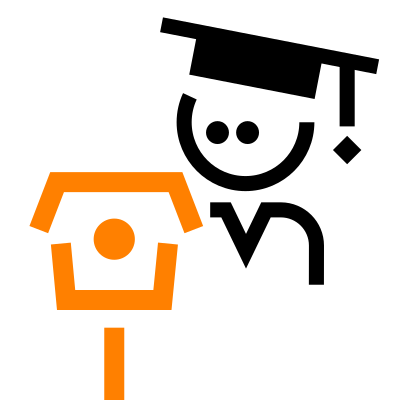In the IoT landscape, audio transmission and playback is essential for smart devices in the home. In a smart ecosystem, IoT devices must be able to capture and share audio. For example, smart doorbells capture and transmit high-quality audio signals to phones so visitors can communicate with homeowners. Other examples are pet surveillance/feeders in which users want to be able to communicate with their pets, but generally many use cases can be found.
To include these sophisticated audio capabilities in IoT devices, developers will rely on audio development boards and audio development kits. These tools offer the necessary hardware and software support for creating audio applications. With the groundwork in place, developers can get creative with their audio devices.
Why use an audio development board?
Before discussing audio development boards, let’s discuss the wider kit. Audio development kits (ADKs) are bundles of hardware and software tools that developers use to create audio applications.
Generally, an ADK is a complete package designed for developing, prototyping, and testing audio products. It includes an audio development board – the main hardware component – along with additional tools, accessories, and documentation to provide a more comprehensive development ecosystem.
An ADK aims to reduce the complexity of developing audio systems from scratch by providing a pre-built, well-documented environment in which developers can get started quickly and experiment. This is particularly beneficial for rapid prototyping and proof-of-concept development, in which time-to-market is critical.
However, a developer might choose to use an audio development board instead of a complete kit for several reasons, such as the flexibility they offer. Unlike ADKs, audio development boards provide only the foundational hardware necessary to build audio projects. This allows developers to handpick other components they need, such as specific digital signature processors (DSPs) or audio input/output devices, creating a tailored setup based on a project’s requirements.
By using audio development boards, developers can focus on rapid experimentation, in which they can iterate through different designs and test audio algorithms more flexibly. The foundational hardware provided by these boards is great for prototyping and refining the core audio functionality without additional peripherals that may not be necessary.
Popular audio development boards
Now that you know the why, let’s discuss the what, or rather the which: which board should you choose? Here are some of the audio development board options available:
Raspberry Pi 1-4 and Pico
Raspberry Pi boards, including the Raspberry Pi 1, 2, 3, 4, and Pico, can support a range of audio formats with the help of an additional accessory, namely one of the four Raspberry Pi Audio boards. The boards include:
- DAC Pro
- DAC+
- DigiAmp+
- Codec Zero
You can read more about the specifications of each of the audio boards on the Raspberry Pi website.
While support for audio isn’t native to the boards, the Raspberry Pi’s versatility makes it ideal for projects such as media centers, music streaming devices, and smart speakers. The board also features robust processing power, allowing it to handle complex audio applications while remaining versatile for other computing tasks. Its extensive community support and large ecosystem of accessories make it a popular choice for audio development.
ESP32 microcontroller boards
Espressif’s boards based on the ESP32 microcontroller series include several options specifically designed for audio applications. Here are just a few of the most popular:
- ESP32-LyraT: This board is designed for voice recognition and audio streaming applications. It includes features like a built-in audio codec (ES8388), a microSD card slot, and support for microphones and speakers. It’s ideal for projects like smart speakers, voice assistants, or music streaming devices.
- ESP32 Audio Development Kit (ESP32-A1S): Similar to the LyraT, this board is optimized for audio applications with a focus on voice recognition and music streaming. It includes an I2S interface for audio, a built-in microphone, and speaker support.
- ESP32-Korvo: This development board targets speech and audio processing. It features multiple microphones, a speaker amplifier, and a digital signal processor (DSP) for advanced voice interaction use cases.
The powerful ESP32 MCU offers dual-core processing capabilities along with integrated Bluetooth and Wi-Fi support. These boards are designed for wireless audio applications and support various audio streaming protocols such as A2DP. They are well-suited for projects like wireless speakers, smart home devices, and IoT-enabled sound systems. The boards also include GPIO pins, enabling developers to easily integrate additional peripherals and sensors into their projects.
STM32 MCU boards
STMicroelectronics has a series of boards built on its STM32 microcontroller, which is known for its power efficiency and high performance. Several of these boards are specifically designed for audio, including:
- STM32F4 Discovery Board (with Audio Codec): The STM32F4 Discovery board includes a high-performance STM32F407 MCU and a CS43L22 stereo DAC/audio codec. This makes it ideal for audio processing applications such as MP3 players, audio filters, and real-time audio effects.
- STM32H7 Audio Development Kit: The STM32H7 series microcontrollers are popular for high-performance audio processing due to their advanced computing capabilities, including support for DSP instructions and fast floating-point units. Some development boards in this series come with integrated audio interfaces, including digital microphones, audio codecs, and support for I2S, SPDIF, and TDM audio interfaces.
- STM32L4+ Discovery Kit for IoT Nodes (B-L475E-IOT01A): This IoT-focused discovery kit includes audio support for applications like voice control and audio streaming. While it is not explicitly designed for audio-only projects, it does come with a digital MEMS microphone and an ultra-low-power STM32L4+ MCU, making it useful for portable or battery-operated audio devices.
These boards are compatible with STM32Cube software tools, allowing developers to create complex audio solutions efficiently.
Texas Instruments audio-focused boards
Texas Instruments (TI) has most of its audio-focused boards scattered across various series and MCUs. Some of the top options include:
- TLV320AIC3254EVM-U Audio Codec Development Kit: This kit provides an evaluation platform for the TLV320AIC3254, a low-power, highly integrated stereo audio codec. It features analog and digital audio inputs and outputs, as well as built-in miniDSP capabilities, making it suitable for a wide range of audio processing applications such as MP3 players, audio effects, and voice recognition systems.
- TAS2563EVM Digital Input Class-D Amplifier Evaluation Module: This evaluation module features the TAS2563 digital-input Class-D amplifier with integrated speaker protection and real-time audio processing. It supports compact, battery-powered audio applications such as wireless speakers, personal assistants, and portable sound systems.
TI’s boards are ideal for IoT projects requiring advanced audio processing.
Choosing the right audio development board
Selecting the right board is crucial for the success of your audio application, particularly in IoT, because it directly impacts performance and functionality. Understanding the specific audio application you are developing – whether it’s a smart doorbell, pet monitoring camera, or smart alarm– will guide your choice.
First, you need to consider connectivity. Determine whether your project requires wireless capabilities, such as Bluetooth or Wi-Fi, or if a wired connection is sufficient. Boards like the Espressif ESP32 are great options for wireless audio applications, particularly in smart home environments.
Power efficiency is also an important consideration. Look for boards that incorporate power-saving features, such as low-power modes and efficient audio processing capabilities. Assess the specifications to understand the board’s power consumption, as this will help ensure your product can operate effectively without frequent recharging.
Latency is another thing to consider, or how much lag is acceptable in audio transmission. If you’re focusing on a smart security camera, for example, you’ll want a board that emphasizes low-latency audio processing.
Final thoughts
Audio development boards are integral to building innovative smart devices with audio capabilities. By offering the necessary hardware foundation and facilitating rapid prototyping, these boards empower developers to create high-quality audio applications that enhance user experiences. Whether you’re working on something as simple as a smart doorbell, a whole security system, or other audio-enabled devices, selecting the right audio development board can significantly impact the success of your project.
Read our other resources
We’ve published a range of resources for our community, including:
- Our guide to streaming video between IoT devices
- A comprehensive guide to industrial IoT boards
- Understanding WebRTC IoT in 2024, which explains the use of WebRTC in the IoT landscape








